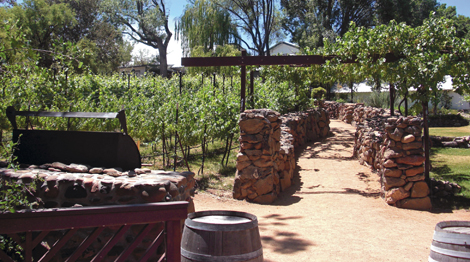Page 1 of 4
From grape growing to award-winning pours, Arizona winemakers are proving that the altitudes of the Southwest are about much more than sweeping views of saguaros.

While the West Coast has been heralded for generations as home to some of the world’s most influential wine regions, Southwestern wineries have been steadily climbing up the ranks in terms of quality and visibility. For so long, the idea of producing a successful vino brand in the Arizona desert was thought to be an impossibility due to the region’s rough heat patterns and tough soils. According to the Arizona Wine Growers Association, the state’s wine prowess picked up steam in 1973 and since, three distinctly different wine regions have utilized sustained grape-growing techniques to beat the heat.
“The heat here is often like the south of Spain, Southern Italy and some of the other Mediterranean regions,” says Greg Tresner, master sommelier at The Phoenician. “The grape varietals grown there often work here too.” Tresner says that hot weather grapes, referred to in the wine industry as Rhone varietals for their prominence in Southeast France, are ideal for the production of warmer climate wines.
In addition to careful selection of grape types, Tresner says that Arizona grape growers have a myriad of tricks up their sleeves when it comes to yielding successful harvests each year. “What many people discovered and in particular Dr. [Gordon] Dutt, a pioneer of Arizona’s Sonoita Wine Country, is that techniques used in Europe—like south- and east-facing sloped vineyards—worked well in the higher altitudes around the state,” Tresner says. “Grape growers can adjust their vineyards so that areas with too much sun may be more northern facing and vice versa.” Vintners can also use leaf management by utilizing leaves on vines as shade providers or removing them in areas that need additional sunlight. “There are a lot of adjustments that you can do,” Tresner says. “But most importantly, perhaps, is the altitude. When you start getting up 4,000 feet above sea level, you get cooler temperatures.” It’s the cooler temperatures that make Arizona wines possible.
